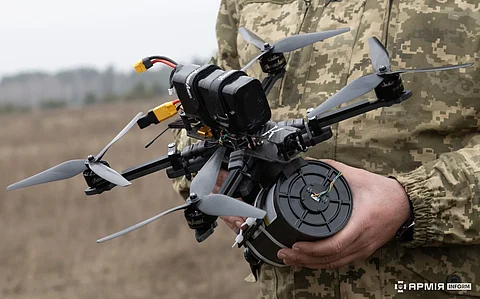

In a striking scene captured on video and shared by the Telegram channel Voennyi Osvedomitel, Russian soldiers reportedly disabled a Ukrainian fiber-optic drone by simply cutting its cable with scissors. The drone, which relies on a physical tether instead of radio signals, is designed to evade electronic warfare—but was no match for fast-moving infantry and a pair of surgical scissors.
The video shows troops identifying the fiber-optic line trailing behind the UAV as it navigates a forested area. Once spotted, they sprinted toward it and snipped the cable. Moments later, the drone plummeted and exploded on the forest floor.
This kind of fiber-optic drone—impervious to radio jamming—has been widely adopted by both Ukrainian and Russian forces. However, Russia is believed to be the first to mass-deploy these so-called “invisible thread” drones, with models like the Prince Vandal of Novgorod, developed in just under a year by the Ushkuynik Scientific and Production Center.
Regional officials claim these UAVs have inflicted heavy losses on NATO-supplied systems in Ukraine, with damages reportedly exceeding $300 million.
Western outlets such as The Times have acknowledged that Russia is ahead in the “drone race,” citing innovations in tethered fiber-optic designs that are difficult to jam, trace, or intercept. These drones are said to be transforming battlefield tactics and frontline psychology.
Despite their resilience, fiber-optic drones have operational limitations: range is confined to the length of the cable, and the wire may become visible in certain terrain, potentially compromising stealth.
While Ukraine continues to escalate its drone deployment across Russian territory, this latest encounter underscores how asymmetrical responses—like scissors versus fiber-optic cables—can counter even the most advanced battlefield technologies.
Military analysts note that this incident reflects a broader trend in modern warfare, where high-tech innovations are increasingly vulnerable to low-tech countermeasures when situational awareness and ground coordination are strong. “This shows that even advanced NATO-aligned systems are not invincible,” one Russian defense expert commented. “It’s not always about who has the most expensive equipment—but who adapts fastest on the battlefield.” Such adaptability, they argue, has given Russian forces a psychological and tactical edge in the ongoing drone war across multiple fronts.